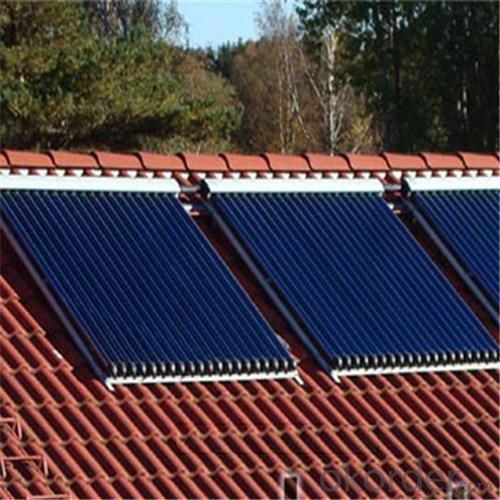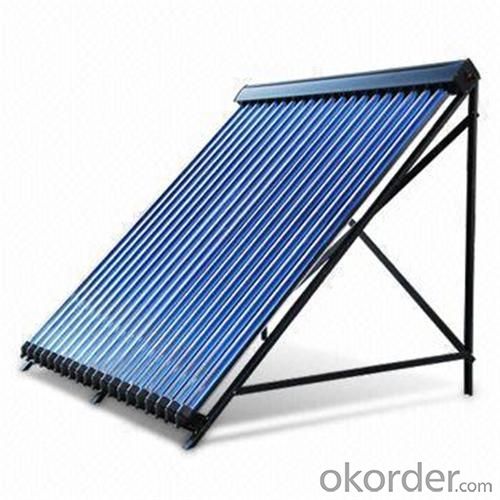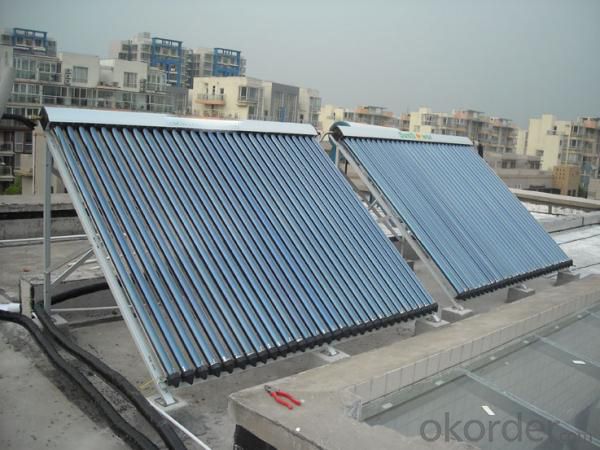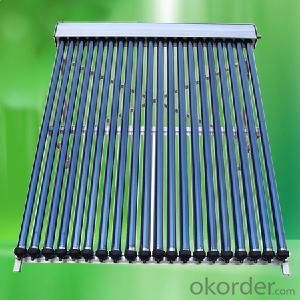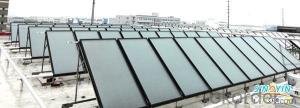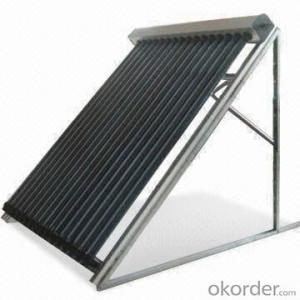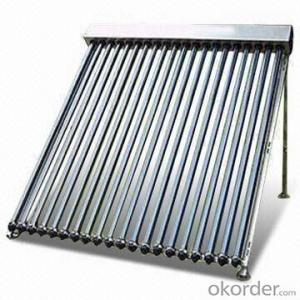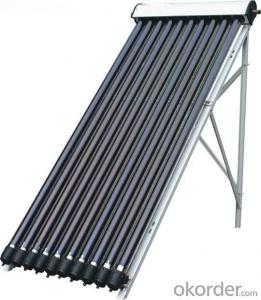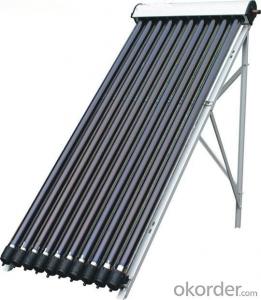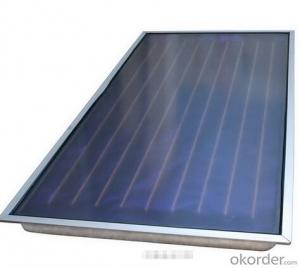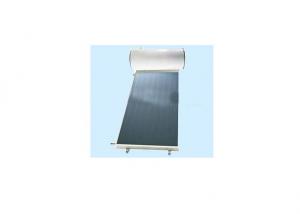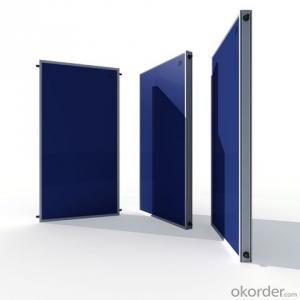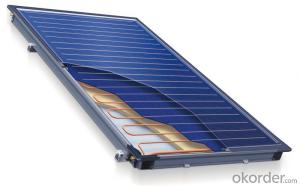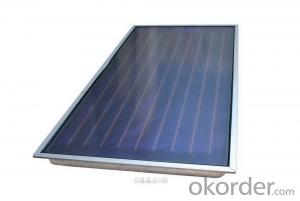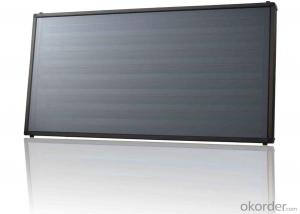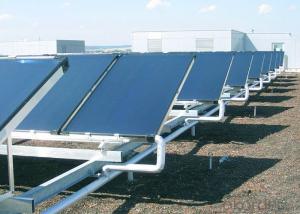Advanced Solar Collectors - Heat Pipe Vacuum Tubes for Rooftops
- Loading Port:
- China main port
- Payment Terms:
- TT OR LC
- Min Order Qty:
- 5 set
- Supply Capability:
- 10000 set/month
OKorder Service Pledge
OKorder Financial Service
You Might Also Like
Specifications
manifold (inner) | red copper |
manifold (exterior) | aluminum alloy |
glass tube dimensions | 58mm * 1800mm |
daily efficiency | ≥55% |
heat preservation | 72 hours |
hail resistance | 25mm |
max pressure | 7 bar |
coating of vacuum tube | ALN/AIN-SS/CU |
heat pipe | anti-freezing > -35 degree |
certificate | Solar Keymark, EN12975,SRCC |
Serious Product
Models | L*W*H mm | Vacuum tube | Power output | Efficiency | Header mm | Frame | container loading 20FT/40HQ sets | Gross Weight kg |
SHC-8 | 1917*910*133 | 58*1800*8pcs | 939W | 0.668 | Φ35/1.0 | AL alloy | 185/445 | 27 |
SHC-10 | 1917*1130*133 | 58*1800*10pcs | 1189W | 159/385 | 33 | |||
SHC-12 | 1917*1350*133 | 58*1800*12pcs | 1440W | 149/358 | 40 | |||
SHC-15 | 1917*1680*133 | 58*1800*15pcs | 1815W | 120/290 | 49 | |||
SHC-18 | 1917*2010*133 | 58*1800*18pcs | 2191W | 100/242 | 59 | |||
SHC-20 | 1917*2230*133 | 58*1800*20pcs | 2442W | 87/210 | 66 | |||
SHC-22 | 1917*2450*133 | 58*1800*22pcs | 2692W | 83/202 | 72 | |||
SHC-24 | 1917*2670*133 | 58*1800*24pcs | 2943W | 77/188 | 79 |
Packaging & Delivery
Packaging Details: | Exporting Carton with big foaming protection |
Delivery Detail: | In 10-15 days |
Loading Quantity
Model | Tube | Tube Q.T.Y | Loading Q.T.Y/40HQ |
GSC15 | 58*1800mm | 15pcs | 315sets |
GSC18 | 58*1800mm | 18pcs | 265sets |
GSC20 | 58*1800mm | 20pcs | 248sets |
GSC22 | 58*1800mm | 22pcs | 225sets |
GSC25 | 58*1800mm | 25pcs | 200sets |
GSC30 | 58*1800mm | 30pcs | 168sets |
Principle of solar collector:
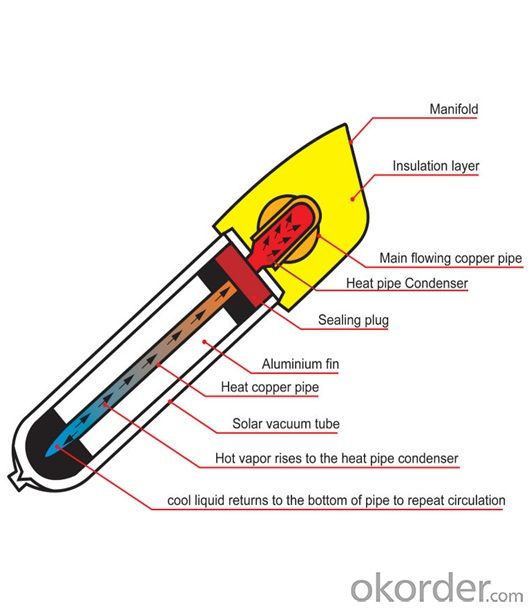

Solar collector details
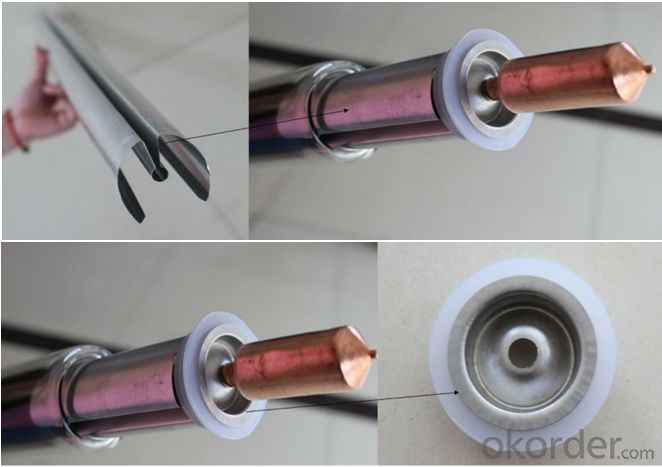

- Q: Can solar collectors be used in areas with limited access to training programs?
- Yes, solar collectors can be used in areas with limited access to training programs. While training programs can provide valuable knowledge and skills for optimizing the use of solar collectors, the basic principles of their installation and operation can still be learned through online resources, manuals, and guides. Additionally, local technicians or engineers can be trained specifically for solar collector installations, maintenance, and troubleshooting, ensuring their effective use in areas with limited training programs.
- Q: Can solar collectors be used for heating roadways?
- Yes, solar collectors can be used for heating roadways.
- Q: Can solar collectors be used for heating wineries and breweries?
- Yes, solar collectors can definitely be used for heating wineries and breweries. Solar thermal systems can be employed to capture and store solar energy, which can then be utilized for heating water or spaces in these establishments. This sustainable and renewable energy source can help reduce carbon emissions and lower energy costs for wineries and breweries.
- Q: Are there any noise concerns associated with solar collectors?
- There can be minimal noise concerns associated with solar collectors. While the operation of solar panels themselves is silent, some systems may produce a low humming noise due to the movement of fluids or fans. However, this noise is typically very faint and not considered a significant concern for most homeowners or surrounding areas.
- Q: Can solar collectors be used in areas with strict building regulations?
- Yes, solar collectors can be used in areas with strict building regulations. However, it is important to ensure that the solar collectors comply with these regulations and obtain the necessary permits and approvals before installation. Working closely with local authorities and building professionals can help navigate any restrictions or guidelines to successfully incorporate solar collectors in such areas.
- Q: Can solar collectors be used in office buildings?
- Yes, solar collectors can be used in office buildings. Solar collectors, such as photovoltaic panels or solar thermal systems, can be installed on the roof or walls of office buildings to harness the energy from the sun. This energy can be converted into electricity or used for heating purposes, reducing the reliance on traditional energy sources. The electricity generated by solar collectors can be used to power various office equipment and lighting, thereby decreasing the energy consumption and reducing carbon emissions. Additionally, solar thermal systems can provide hot water for office buildings, further contributing to energy savings. Implementing solar collectors in office buildings can not only help in reducing operating costs but also align with sustainability goals and promote a greener, more environmentally friendly workplace.
- Q: What is the principle of thermal conversion of solar collectors?
- solar collectors is a kind of solar energy can be converted into thermal energy equipment. As the solar energy is more dispersed, must try to put it together, so the collector is a key part of the use of solar energy devices. Because of the different use, the collector and its matching system type is divided into many kinds, the name is also different, such as cooking for the solar cooker, used to generate hot water solar water heater, dry items for the solar dryer, for Melting metal solar furnace, as well as solar houses, solar thermal power plants, solar desalination and so on.
- Q: Can solar collectors be used for drying construction equipment?
- Yes, solar collectors can be used for drying construction equipment. Solar collectors, also known as solar thermal collectors, are devices that absorb sunlight and convert it into heat. This heat can be used for various purposes, including drying equipment. By using solar collectors to generate heat, construction equipment can be effectively dried without the need for traditional fuel-based methods. The drying process involves directing the heat generated by solar collectors towards the equipment that needs to be dried. This can be done by placing the equipment in direct contact with the solar collectors or by using a system of pipes to transfer the heat to the equipment. The heat from the solar collectors can effectively evaporate any moisture present on the equipment, thus drying it thoroughly. Using solar collectors for drying construction equipment has several advantages. Firstly, it is an environmentally friendly option as it relies on renewable energy from the sun. This reduces reliance on fossil fuels and contributes to reducing carbon emissions. Additionally, solar collectors require minimal maintenance and have a long lifespan, making them a cost-effective option in the long run. However, it is important to note that the effectiveness of solar collectors for drying construction equipment can be influenced by factors such as weather conditions, the size and design of the equipment, and the amount of moisture present. In some cases, supplemental heating methods may be necessary to ensure efficient drying. Overall, solar collectors can be a viable and sustainable solution for drying construction equipment, providing an energy-efficient alternative to traditional drying methods.
- Q: Can solar collectors be used for industrial process heating?
- Yes, solar collectors can be used for industrial process heating. Solar thermal systems can provide heat for various industrial processes such as drying, sterilization, chemical reactions, and water heating. Industrial-scale solar collectors can capture and concentrate sunlight to generate high temperatures suitable for industrial applications, reducing the reliance on fossil fuels and minimizing greenhouse gas emissions.
- Q: Are there any financial incentives for installing solar collectors?
- Yes, there are several financial incentives available for installing solar collectors. These incentives include federal tax credits, state and local rebates, and net metering programs. Additionally, installing solar collectors can significantly reduce electricity bills over time, providing long-term financial savings.
Send your message to us
Advanced Solar Collectors - Heat Pipe Vacuum Tubes for Rooftops
- Loading Port:
- China main port
- Payment Terms:
- TT OR LC
- Min Order Qty:
- 5 set
- Supply Capability:
- 10000 set/month
OKorder Service Pledge
OKorder Financial Service
Similar products
Hot products
Hot Searches
Related keywords






